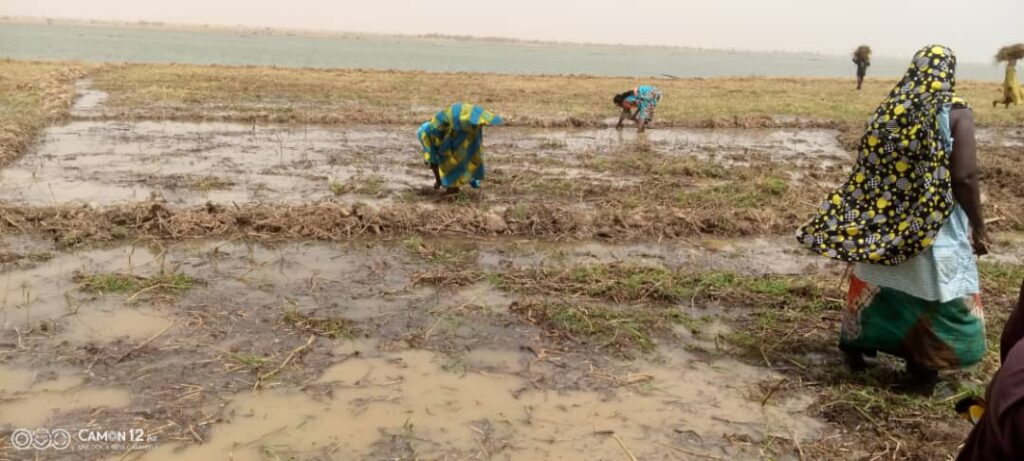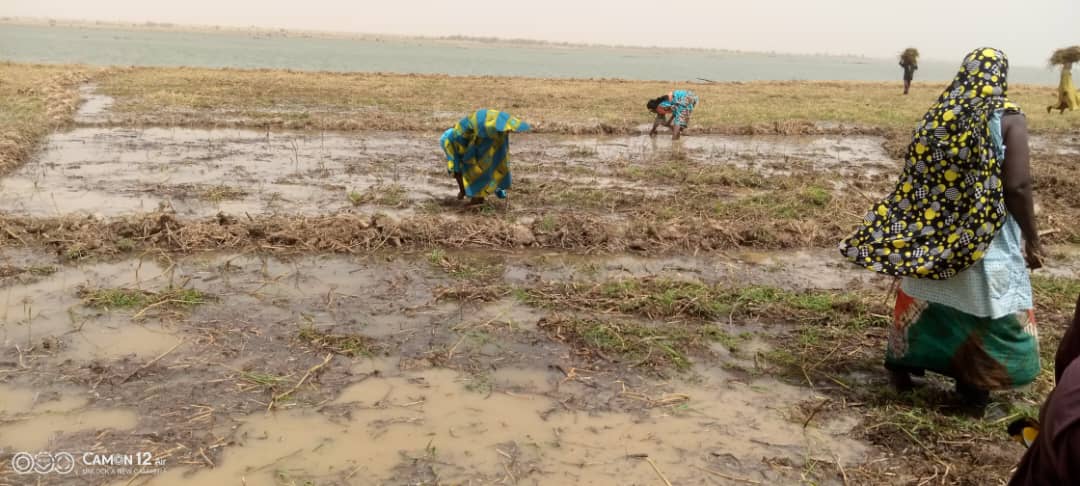In the heart of Niger, along the banks of the river, a pilot project is breathing new life into a natural reserve long neglected by policies—but not by its communities. The Kandadji pilot project is more than just an environmental initiative. It is a powerful symbol: one of a respected nature, a revitalized rural economy, and a sustainable future being written with and for local communities.
As part of the NB-ITTAS Project, the Niger Basin Authority (NBA) has supported the implementation of a community-based pilot project for the restoration and improved management of the Kandadji National Nature Reserve (RNNK)—an emblematic site of high ecological and social value, where hippos, fishermen, and hopes for sustainable development coexist.
The project focused on several key interventions, including:
- The restoration of 15 hectares of bourgou grass, a key aquatic plant species for hippopotamus habitat (10 ha within the sanctuary and 5 ha in surrounding villages);
- The training of 29 beneficiaries, including 13 women, in IWRM, sustainable wetlands management, project management, and the rational use of natural resources;
- The distribution of modern equipment to fishermen and fish processors in Koudjé (mainly solar refrigerators, improved cookstoves, nets, scales, tables, hooks, basins, etc.).
This integrated approach to the community-based restoration and management of the Kandadji National Nature Reserve has led to the regeneration of aquatic ecosystems, while improving the income and working conditions of riverside populations.

Decentralized governance, local ownership
Management committees have been established on the project’s intervention sites, involving technical services, local authorities, and direct beneficiaries. The site management approach is now clear, collaborative, and well-monitored, with mechanisms in place to secure the distributed equipment.
Despite major security challenges in the region—making some monitoring missions nearly impossible—the project’s results are viewed as highly positive by local stakeholders and, above all, full of hope.
Looking ahead: going further, together
The ultimate dream of the local communities is the launch of Phase 2 of the NB-ITTAS Project. Recommendations for this next step are already clear. The communities are strongly advocating for the expansion of high-potential economic projects, such as beekeeping, market gardening, ecotourism, and environmental education.
They also suggest strengthening biodiversity monitoring, especially for bird and mammal species, and enhancing the value of non-timber forest products (NTFPs). Consolidating local capacities in land management and natural resource conservation also remains a top priority for these populations, who—thanks to the NB-ITTAS Project—are rediscovering harmony between humans, animals, and nature.


